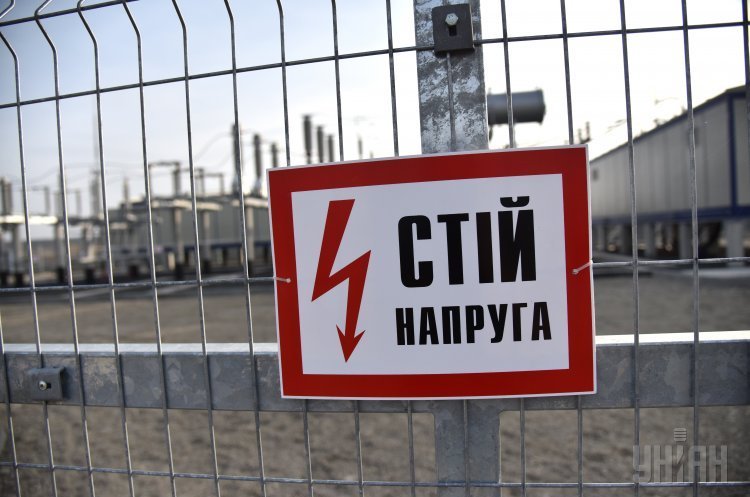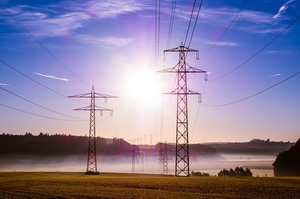Electricity Market Reform: How Large Consumers Can Avoid Losses. An Algorithm of Actions
How the new electricity wholesale market will work and what large consumers should focus on to gain benefits

Starting mid-2019, a new reformed electricity market will be launched in Ukraine. For large (primarily industrial) consumers, it will be a commodity exchange to a large extent. And as with any exchange, you can get additional profits or end up in losses.
What should large consumers know to stay in the black? Traders from energy company DTEK who have held a series of specialized training sessions this autumn tried to answer that question.
Market segments
According to the Electricity Market Law in Ukraine, a new competitive electricity market will start functioning from 1 July 2019.
In short, the current model when the state-owned Energorynok operates as a single electricity wholesale buyer will be abolished. Instead, a model of direct bilateral agreements between electricity producers and suppliers or consumers, as well as such competitive segments as day-ahead, intraday, balancing, and ancillary services markets will be introduced.
The market segments are differentiated largely by electricity supply time.
As European electricity market experiences have shown, the shorter the supply time is, the wider is the price fluctuation range. Generally, the highest electricity prices are seen in the balancing market. And vice versa, the prices are least volatile in the unregulated market of bilateral agreements, where the supply time is often one year or longer.
For example, in 2017 the average megawatt-hour price under bilateral agreements in the Hungarian electricity market was 38 Euro year ahead, 48 Euro month ahead, and 52 Euro day ahead. On the balancing market, the price was 76 Euro for 1 MWh.
Restructuring
All of the five market segments will be created on the basis of Ukrenergo and Energorynok state-owned companies after their restructuring and split-up. Ukrenergo will be reorganized into the transmission system operator (TSO), which will also act as a power metering and a settlement system administrator.
In turn, day-ahead and intraday operators, as well as a guaranteed buyer that obligatorily buys all electricity generated by renewable energy sources (RES) and renovated CHPs will derive from Energorynok. The company will still exist until the debts of today's wholesale market are completely settled. The total debt amount is about 30 billion Hryvnias.
In other words, the functioning of the four future wholesale market segments will be ensured by two state-owned companies acting as a market operator and a transmission system operator (dubbed a ‘system operator’ in Ukraine). A similar organizational model of national competitive electricity markets is common in the EU countries.
Bilateral agreements market
The participants of this market, such as producers, suppliers, and large consumers buy and sell electricity at free market prices and agree upon purchase volumes, supply times, and prices.
Terms and conditions of the bilateral agreements is a subject of mutual consent between two parties, including electricity price fixing for a long term.
After signing the agreement, the producer and the consumer should only submit hourly supply schedules to the transmission system operator for each corresponding day.
NEURC has no right to interfere with the pricing process or relations between the participants of bilateral agreements market.
The only exception is the state-owned Energoatom and Ukrhydroehergo. The participation of the two companies in the bilateral agreements market can be regulated and limited by special rules.
Bilateral agreements are long-term contracts made between participants for a period of one month to one year. Price volatility under the agreements also directly depends on the supply time – the shorter it is the higher is volatility, and vice versa.
The average historical volatility under electricity supply bilateral agreements in the EU countries is 10 percent for one-year, 25 percent for quarterly, and 50 to 60 percent for a monthly supply. This compares to 80% volatility in the day-ahead market.
The benefits of the long-term agreement for producers, suppliers, and consumers are as follows:
- the reduced risk of electricity price fluctuations;
- accurate planning of revenue and expenditures;
- accurate forecasting of production costs.
As a rule, generation companies and large industrial consumers in the EU buy and sell up to 80 percent of electricity under bilateral agreements.
Day-head and intraday markets
These are organized market segments where a single price for consumers and electricity suppliers is set for the next 24 hours (for each hour separately) based on a marginal pricing principle. Additionally, electricity sale and purchase closest to the supply time is performed during the intraday bidding.
In fact, the prototype of this model is successfully operating in the Ukrainian electricity market today. More specifically, suppliers buy electricity from the state-owned Energorynok under an hourly day-ahead schedule. The only difference is that pricing for products offered by state-owned companies is being set and regulated by NEURC today. But starting from July 1, 2019, only free market pricing principles will apply.
The day-ahead market price is calculated simultaneously for each hour of the day for all bids and quotations.
The pricing principle is simple – supply-and-demand curves are formed for each hour of the day. The intersection of the curves defines the equilibrium price – a single closing price of electricity for a particular hour for all.

Source: DTEK
The same pricing principle is working today for heat generation companies in the Ukrainian wholesale market – a single price for all is determined by the last generating unit that has passed a competitive procedure. In Ukraine, it is called the "cut-off price".
In this market segment, participants do not trade electricity directly. All electricity is purchased and sold only through a market operator acting as a central contractor for all purchase and sale deals.
Major risks for large consumers when operating in the day-ahead market:
- the complexity of long-term expenditure and profitability planning;
- there is a probability that a bid for electricity will not be satisfied. Correspondingly, the last chance to buy electricity would be entering the balancing market. Occasions, when the intraday market has enough liquidity, are rare;
- during the periods of high prices, operating at a loss is probable.
Balancing market
So-called imbalances are traded in this segment. Participants that face either electricity shortage or surplus enter the balancing market. The demand for the deficient amount of electricity is covered on the transmission system operator’s command by the producers or consumers with manageable loads for a fee.
The need for the supply and demand balancing occurs due to the fact that it is impossible to forecast electricity generation and consumption with 100-percent accuracy. Firstly, both consumers and suppliers make mistakes when forecasting the daily consumption schedule. Secondly, producers may face unpredictable situations when they are incapable of providing their constructed volumes of electricity supply.
The price of electricity in the balancing market is generally higher than in the day-ahead market, and the market itself is characterized by periodical price hikes. For example, in December 2017 in Poland, the maximum imbalance price was 1,500 Zloty per 1 MWh, 777 percent more than the average imbalance price of 171 Zloty.
The bottom line is simple – it is better not to buy electricity in the balancing market unless it is absolutely necessary.
Ancillary services market
The following services can be offered in this market:
- grid frequency and active power regulation, power and energy support in the united power system of Ukraine (UPSU);
- electricity reliability and quality support in UPSU, including voltage and reactive power regulation services, as well as power grid recovery after system outages.
The most universal participant to ensure the supply of electricity to all the electricity market segments and provide a full range of ancillary services is Ukrhydroenergo. The company's first three hydro units at Diester PSPP have a total capacity of 1 GW and can be started within 2 or 3 minutes, which significantly decreases the risks of UPSU system outage.
How consumers should act in the competitive market
First. Large consumers planning to purchase electricity directly in the market without intermediaries should first and foremost learn how to calculate their consumption schedules with a maximum accuracy. Otherwise, they will sooner or later have to buy up electricity in the balancing market at the highest prices.
Many large consumers in the EU countries use specialized software capable of forecasting load schedules with an accuracy of 0.5 percent.
Second. Consumers able to vary their production loads and therefore use flexible consumption schedules will benefit in the future market. There are two ways to eliminate the deficiency of electricity in the grid – either load additional generation capacities or lower the consumption of electricity. In this case, consumers capable of decreasing their load without a noticeable loss of production can get additional earnings in the ancillary services market.
Third. It is necessary to create an optimal portfolio of agreements with suppliers arranged by supply times. I.e. you can contract a basic consumption volume for the period of half a year or one year. Then you can make monthly contracts with an adjusted short-term consumption schedule. And after that, you can sell surplus electricity or buy up a deficient volume in the day-ahead market, as well as enter the balancing market.
On one of its seminars, DTEK representatives offered a consumer's step-by-step approach to operations in different market segments. In short, it looks like this:
- Make an annual electricity consumption forecast with a break-up by seasons.
- Determine a base level of consumption for 24 hours.
- Make a forward contract with a supplier for a base level of consumption (about 80 percent).
- Determine the level of consumption more precisely one month before the supply.
- Make a contract for the second part of consumption level.
- Determine the remaining uncovered position for the purchase of electricity in the day-ahead market (DAM) or intraday market (IDM).
- Sell electricity surplus in DAM or IDM.
- Compare the actually consumed volume with the contracted one.
- Initiate payments for imbalances.

Source: DTEK
But before deciding to ride free and becoming a direct participant of the wholesale market, consumers should weight all pros and cons and decide whether the game worth it. Playing in the electricity market implies additional administrative and financial expenses and risks related to making bad decisions.
For example, it is impractical for large infrastructural companies to buy electricity directly in the wholesale market as they would need to establish accounting points in each region.
Isn't it better to choose an aggregated professional trader if you have one in mind? The same question applies to all other customers, each having its individual operational characteristics.
If you have read this article to the end, we hope that means it was useful for you.
We work to ensure that our journalistic and analytical work is of high quality, and we strive to perform it as competently as possible. This also requires financial independence. Support us for only UAH 196 per month.
Become a Mind subscriber for just USD 5 per month and support the development of independent business journalism!
You can unsubscribe at any time in your LIQPAY account or by sending us an email: [email protected]





